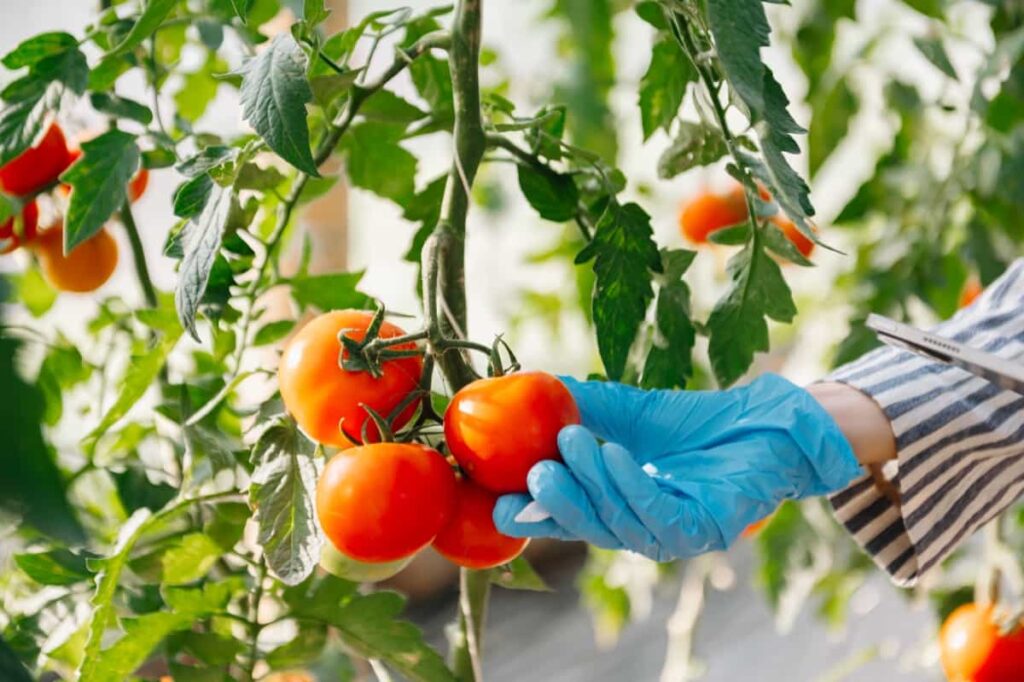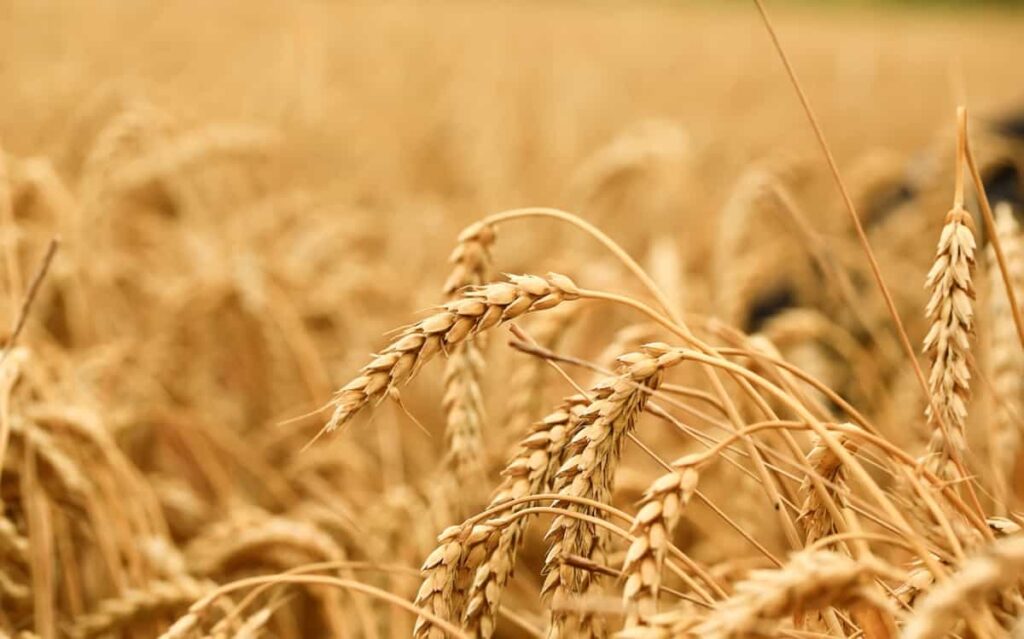Delve into the intriguing world of Indian agriculture with our detailed analysis of crop cultivation costs. This blog simplifies complex data, offering an accessible yet thorough exploration of the financial dynamics shaping India’s agricultural sector.

Cost of Cultivation of Crops in India
Land Preparation Costs
Rice: In India, rice is a basic crop that needs a lot of work and water to cultivate. The land preparation costs for rice include plowing, leveling, puddling, transplanting, and weed control. The average land preparation cost for rice was Rs 11,500 per hectare.
Wheat: Wheat is another important food crop in India, and it is grown mostly in the winter season. The land preparation costs for wheat include plowing, harrowing, sowing, and weed control. The average land preparation cost for wheat was Rs 7,000 per hectare.
Maize: Maize is a versatile crop that can be used for food, feed, and industrial purposes. The land preparation costs for maize include plowing, harrowing, sowing, and weed control. The average land preparation cost for maize was Rs 6,500 per hectare.
Cotton: Cotton is an important cash crop in India, and it is grown mainly in the summer season. The land preparation costs for cotton include plowing, harrowing, sowing, and weed control. The average land preparation cost for cotton was Rs 8,000 per hectare.
Sugarcane: Sugarcane is a perennial crop that can be harvested multiple times in a year. The land preparation costs for sugarcane include plowing, harrowing, planting, and weed control. The average land preparation cost for sugarcane was Rs 15,000 per hectare.
Seed and Sowing Costs
Wheat: The average cost of seed for wheat is Rs 2,000 per quintal. The average cost of sowing for wheat is Rs 1,500 per hectare. Therefore, the total seed and sowing cost for wheat is Rs 3,500 per hectare.
Rice: The average cost of seed for rice is Rs 1,500 per quintal. The average price of sowing for rice is Rs 2,000 per hectare for direct sowing and Rs 4,000 per hectare for transplanting. Therefore, the total seed and sowing cost for rice is Rs 3,500 per hectare for direct sowing and Rs 5,500 per hectare for transplanting.
Maize: The average cost of seed for maize is Rs 2,500 per quintal. The average price of sowing for maize is Rs 1,500 per hectare. Therefore, the total seed and sowing cost for maize is Rs 4,000 per hectare.
Cotton: The average cost of seed for cotton is Rs 4,000 per quintal. The average price of sowing for cotton is Rs 2,000 per hectare. Therefore, the total seed and sowing cost for cotton is Rs 6,000 per hectare.
Sugarcane: The average cost of seed for sugarcane is Rs 300 per quintal. The average price of sowing for sugarcane is Rs 10,000 per hectare. Therefore, the total seed and sowing cost for sugarcane is Rs 34,000 per hectare.
In case you missed it: Sugarcane Cultivation Cost Per Acre in India: Exploring State-wise Average Production Cost

Irrigation Costs
One of the major expenses for farmers in India is the cost of irrigation. The Additional artificial application of water to the soil or crops to guarantee sufficient moisture for development and production is known as irrigation. The price of irrigation depends on various factors, such as the type of crop, the area under cultivation, the source of water, the method of irrigation, and the availability of subsidies.
| Crop | Canal | Tube well | Well | Tank | Other sources |
| Rice | 2,987 | 4,389 | 5,211 | 3,789 | 3,456 |
| Wheat | 2,456 | 3,789 | 4,567 | 3,211 | 2,978 |
| Sugarcane | 5,678 | 7,890 | 9,012 | 6,789 | 6,456 |
| Cotton | 3,456 | 4,567 | 5,678 | 4,123 | 3,890 |
| Maize | 2,123 | 3,234 | 4,345 | 3,012 | 2,789 |
Fertilizer Costs
Fertilizer is one of the most important inputs for crop production. It provides essential nutrients to the plants and enhances their growth and yield. However, fertilizer costs have been rising steadily in recent years, affecting the profitability and sustainability of farming.
| Crop | Average Cost (₹/hectare) |
| Wheat | 4,564 |
| Rice | 5,216 |
| Maize | 4,392 |
| Sugarcane | 12,336 |
| Cotton | 6,048 |
| Pulses | 3,264 |
Pesticide Costs
Chemicals called pesticides are applied to crops to keep them safe from weeds, pests, and diseases. They can help increase crop yield and quality, but they also have some drawbacks. One of them is the cost of buying and applying pesticides, which can vary depending on the type of crop, the pest problem, and the pesticide used.
| Crop | Cost in Rs |
| Rice | 1,223 |
| Wheat | 1,016 |
| Maize | 1,144 |
| Cotton | 3,414 |
| Sugarcane | 1,144 |
| Soybean | 1,144 |
Labor Costs
Farmers incur labor costs when they hire people to carry out a variety of tasks, including preparing the land for sowing, weeding, harvesting, and post-harvest operations. Labor costs can may greatly vary depending on the type of crop, the region, the season, and the availability of labor.
| Crop | Average Labor Cost per Hectare (₹) | Percentage of Total Cultivation Cost |
| Rice | 32,892 | 41% |
| Wheat | 15,509 | 25% |
| Sugarcane | 28,788 | 28% |
| Cotton | 18,189 | 31% |
In case you missed it: Oil Palm Cultivation Cost Per Acre in India: Exploring Input Costs of Oil Palm Farming

Machinery and Equipment Costs
The costs of machinery and equipment depend on various factors such as the type, size, brand, quality, and availability of the machines, as well as the location, season, and demand of the crops. Therefore, the prices we provide here are only indicative and may vary from place to place and from time to time. It helps you compare different options before making a purchase decision.
| Crop | Equipment | Cost Range (₹) |
| Wheat | Tractor | 3 lakh – 15 lakh (new), 1 lakh – 10 lakh (used) |
| Wheat | Rotavator | 50,000 – 1.5 lakh |
| Wheat | Seed Drill | 20,000 – 80,000 |
| Wheat | Thresher | 50,000 – 2 lakh |
| Wheat | Combine Harvester | 10 lakh – 25 lakh |
| Rice | Power Tiller | 80,000 – 1.5 lakh |
| Rice | Transplanter | 1 lakh – 3 lakh |
| Rice | Weeder | 10,000 – 50,000 |
| Rice | Reaper | 50,000 – 2 lakh |
| Rice | Rice Mill | 2 lakh – 10 lakh |
| Cotton | Cotton Picker | 15 lakh – 50 lakh |
Cost of Cultivation of Major Crops in India
India is a global leader in agricultural production, cultivating a wide variety of crops in various agroclimatic zones. The cost of cultivation of these crops depends on various factors such as input prices, labor wages, irrigation charges, land rent, etc. The cost of cultivation also varies across states and regions due to differences in soil quality, water availability, cropping patterns, etc.
| Crop | Cost of Cultivation (Rs/ha) |
| Paddy | 37,312 |
| Wheat | 29,757 |
| Maize | 24,787 |
| Bajra | 16,848 |
| Jowar | 18,118 |
| Ragi | 21,433 |
| Gram | 23,882 |
| Tur (Arhar) | 38,909 |
| Moong (Green Gram) | 28,674 |
| Urad (Black Gram) | 28,674 |
| Groundnut (with shell) | 35,867 |
| Soybean (yellow) | 23,882 |
| Rapeseed & Mustard (Black) | 22,512 |
| Sunflower (Hybrid) Seed (Black) | 27,342 |
| Cotton (Lint) American H-4 Hybrid Seed Cotton (Kapas) (27% lint) | 41,067 |
| Sugarcane (Gur Equivalent) | 102,600 |
| Potato (White) | 103,500 |
| Onion (Red) | 101,400 |
Comparison of Cost of Cultivation Across Different States in India
One of the important factors that affect the profitability and sustainability of agriculture in India is the cost of cultivating different crops. The cost of cultivation varies across states, regions, and crops due to various factors such as input prices, labor wages, irrigation facilities, cropping patterns, etc.
| Crop | State | Cost (Rs/ha) |
| Paddy | Andhra Pradesh | 41,581 |
| Paddy | Bihar | 28,674 |
| Paddy | Punjab | 46,458 |
| Wheat | Madhya Pradesh | 24,895 |
| Wheat | Rajasthan | 23,513 |
| Wheat | Uttar Pradesh | 25,783 |
| Maize | Karnataka | 25,551 |
| Maize | Maharashtra | 24,892 |
| Maize | Telangana | 30,830 |
| Cotton | Gujarat | 37,565 |
| Cotton | Haryana | 40,152 |
| Cotton | Maharashtra | 45,038 |
In case you missed it: Organic Greenhouse Farming Cost in India: Estimation Per Square Foot and 1 Acre

Frequently Asked Questions (FAQ) on the Cost of Cultivation of Crops
What Role Does Technology Play In The Cost Of Cultivation?
Technological advancements can initially raise costs, but they generally lead to long-term savings and increased operational efficiency.
How Do Environmental Factors Impact Cultivation Costs?
Environmental variables, such as climate change and natural disasters, can unpredictably escalate costs, affecting budget planning and resource allocation.
Conclusion
The comprehensive study on crop cultivation costs in India reveals significant regional variations. Key factors like labor, irrigation, and inputs drive these costs, impacting profitability and sustainability for farmers. This highlights the need for tailored agricultural policies and support systems.
- How to Raise Pigs in Your Own Backyard: A Comprehensive Guide
- Budget Friendly Sheep Shed Ideas: Cheap and Low-Cost Tips
- How Much Do Cattle Farmers Make: Revenue Streams in Cattle Farming
- Management Pests and Diseases in Your Cotton Field
- Sheep Farming Business Plan for Beginners
- Aquaponic Farming at Home: A Step-By-Step Guide
- Profitable Village Farming Business Ideas in 2024
- High-Yield Aquaculture: Fast-Growing Fish for Farming
- Effective Fish Pond Construction Techniques for Beginners
